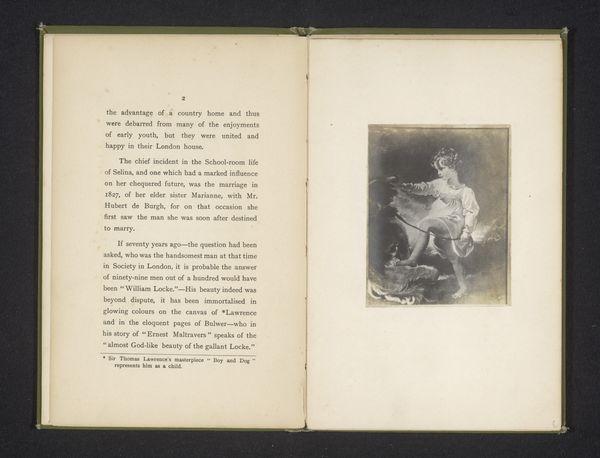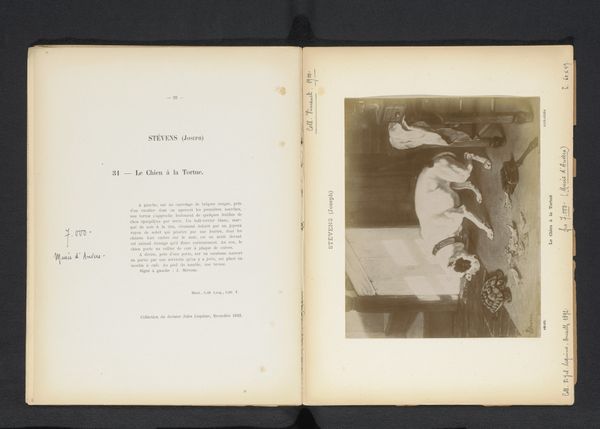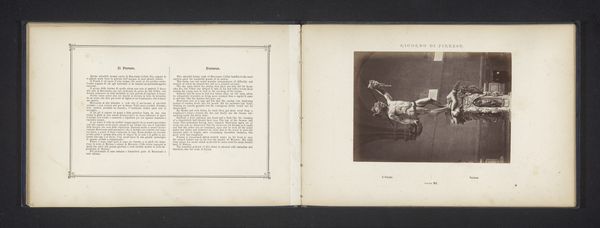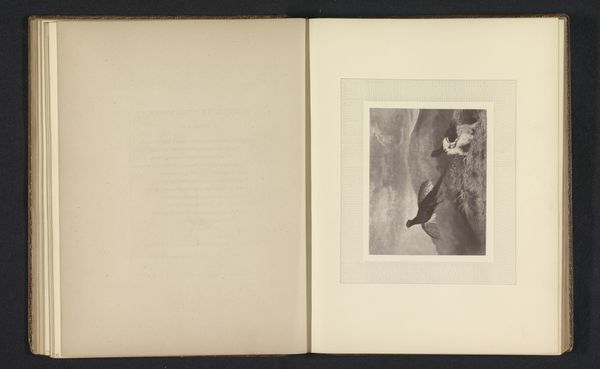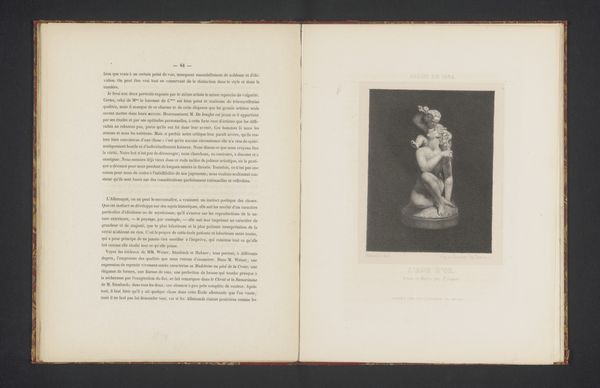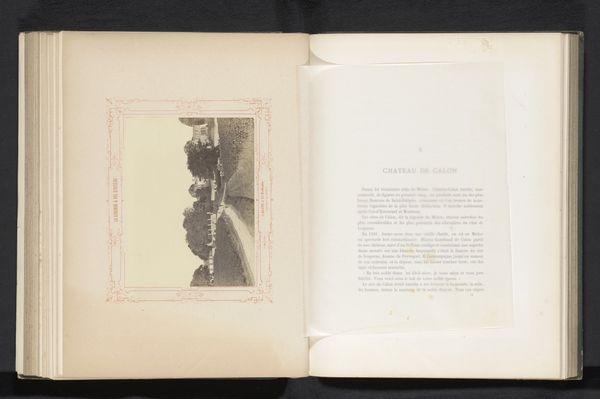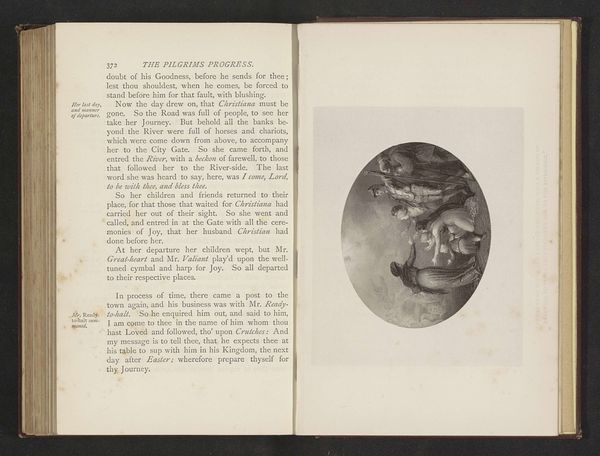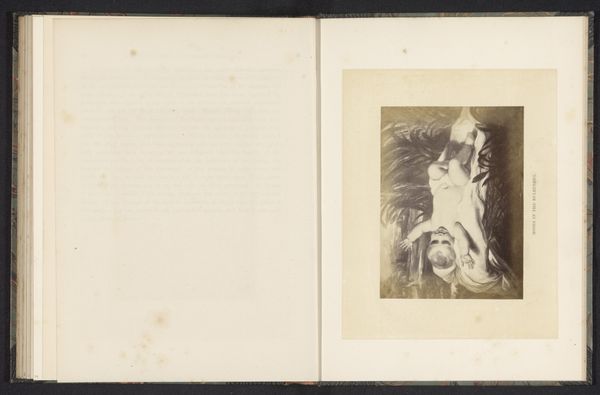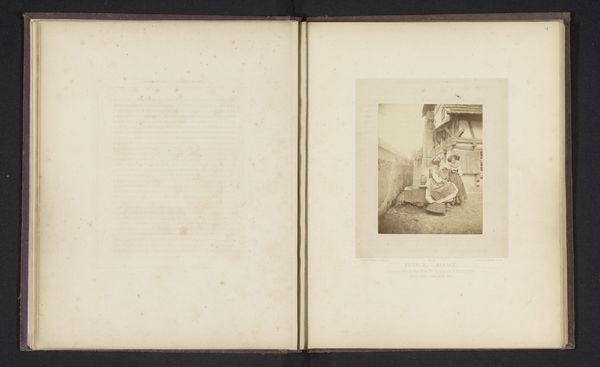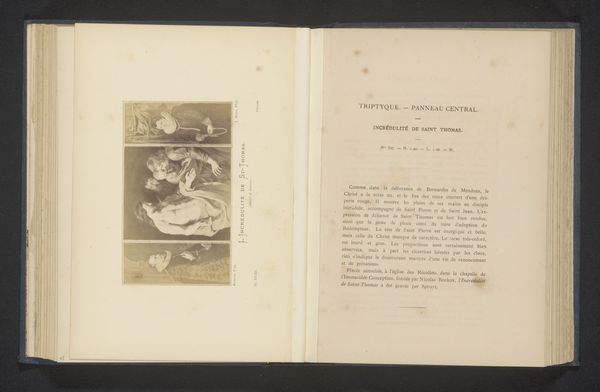
print, bronze, photography, sculpture
#
portrait
# print
#
bronze
#
photography
#
sculpture
#
italian-renaissance
Dimensions: height 146 mm, width 103 mm
Copyright: Rijks Museum: Open Domain
Curator: Before us we have a photographic print by Giacomo Brogi dating from before 1871, depicting Giambologna's iconic bronze sculpture, "The Rape of the Sabine Women" located in Florence. Editor: The figures, stark white against a dark background, seem frozen in a perpetual moment of struggle. The tension is palpable, isn’t it? I’m immediately struck by how much discomfort this image evokes, particularly considering its title. Curator: Absolutely. The upward spiraling composition certainly emphasizes that sense of upheaval and forced movement, the dynamic posture of each figure communicating distress. And, thinking iconographically, we need to consider what the “rape” of the Sabine women represents. This event from Roman mythology symbolizes, at its core, conquest and the subjugation of women to establish power and lineage. Editor: Precisely! What we see here is not simply an artistic rendering but a visual manifestation of patriarchy. Consider the power dynamics: one man forcefully hoisting a woman upwards, another man crushed beneath. It reflects a society structured around male dominance and the brutal control of female bodies. The sculpture originally intended to showcase artistic skill unfortunately perpetuates and immortalizes an act of violence. Curator: While the sculpture embodies complex cultural memory, we should appreciate the virtuosity Giambologna brought to the creation. He captured incredibly lifelike detail. Each muscle and sinew straining, emotions displayed across each face—pain, desperation, fear—making it viscerally resonant. But I take your point regarding its message: in rendering violence beautiful, are we normalizing it? Editor: That's the essential question we must continually ask of historical art. By engaging critically with these challenging artworks, understanding their contexts, and acknowledging their potential harm, we confront and challenge oppressive structures embedded within art history and present-day society. It allows us to be informed viewers, recognizing and resisting problematic narratives instead of passively consuming them. Curator: Ultimately, art serves as both reflection and tool—reflecting values of a certain time while equipping us with means for transformation. Editor: Agreed. Let’s keep digging to see where we can excavate similar tensions in the cultural strata beneath this piece!
Comments
No comments
Be the first to comment and join the conversation on the ultimate creative platform.
